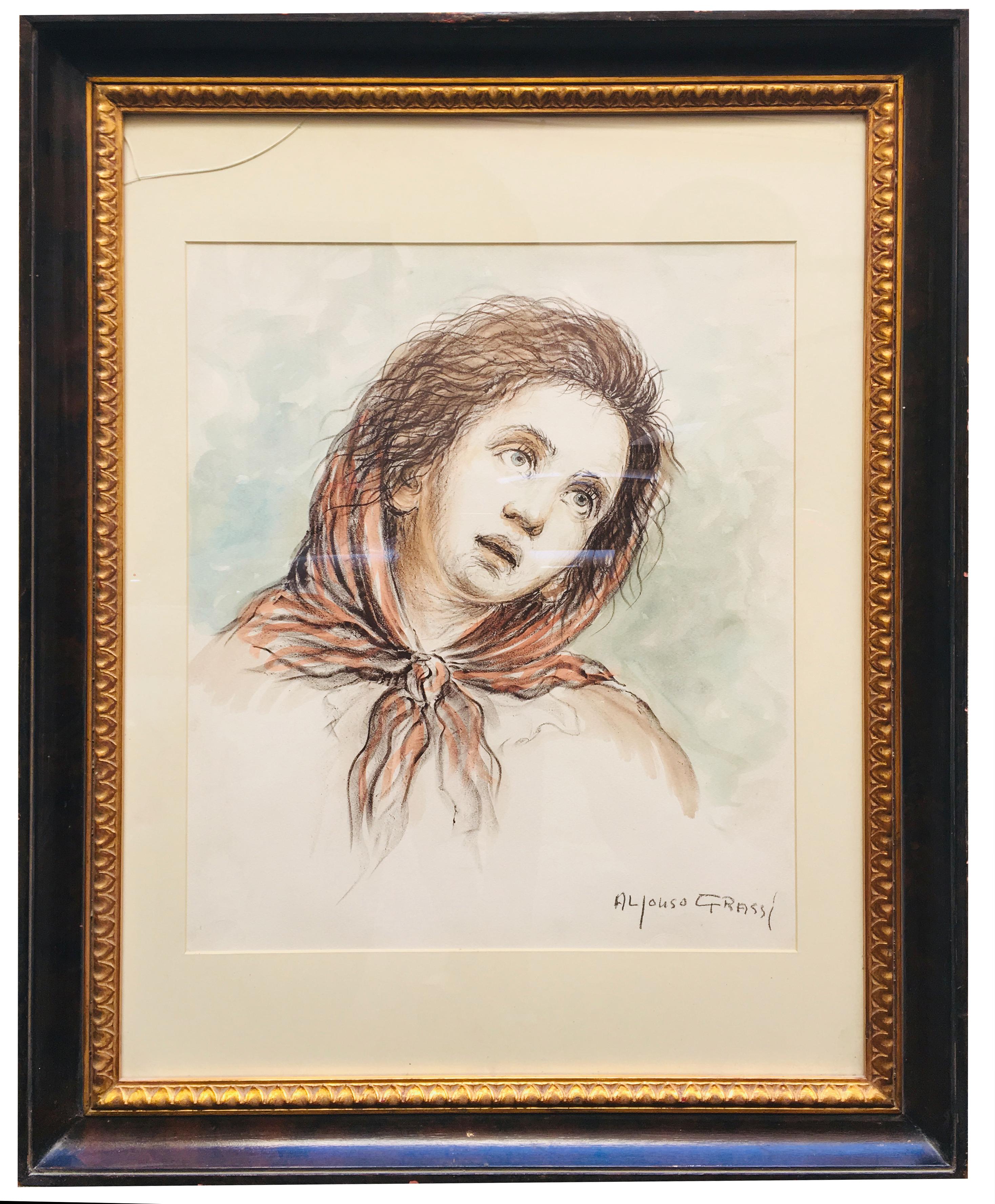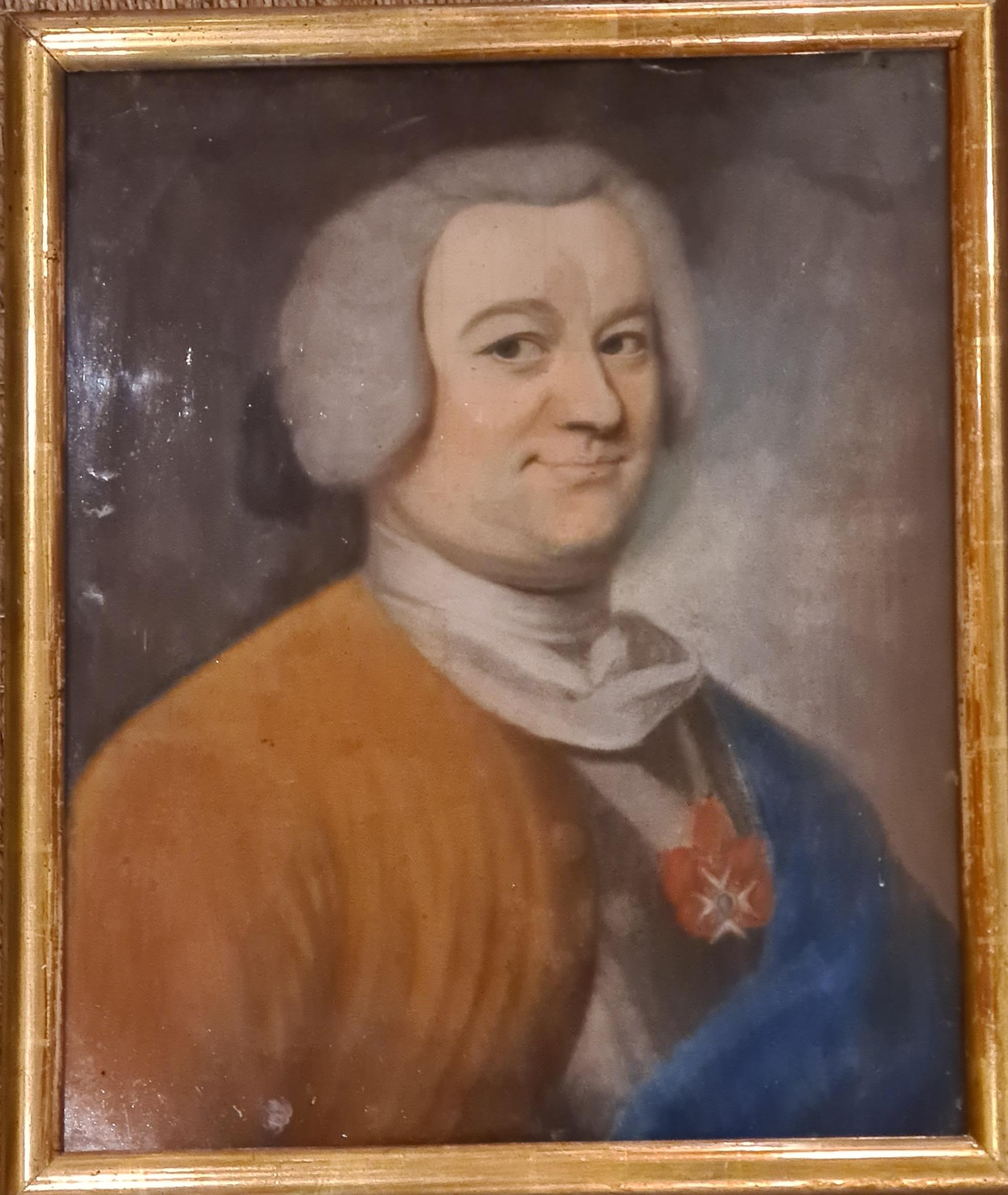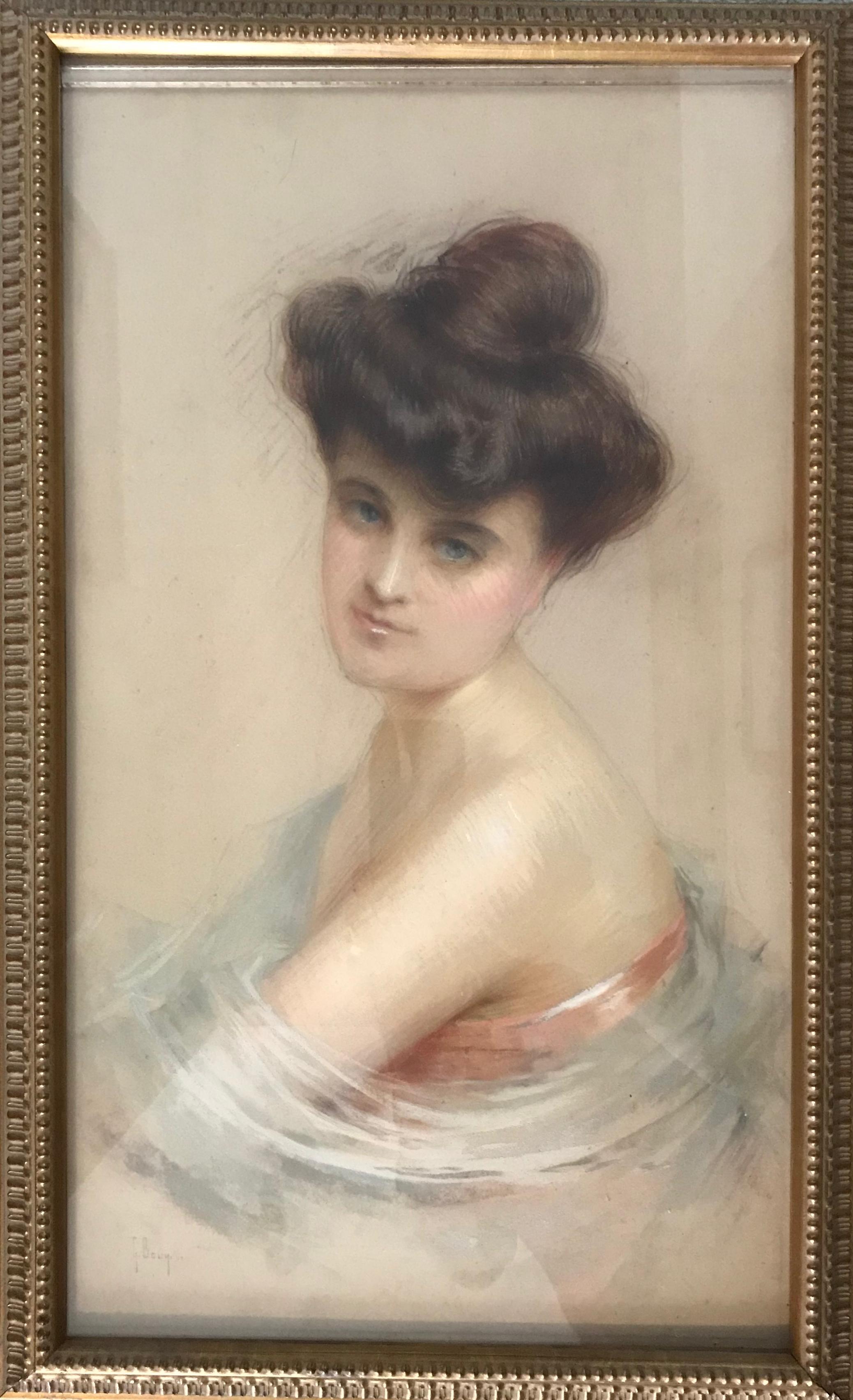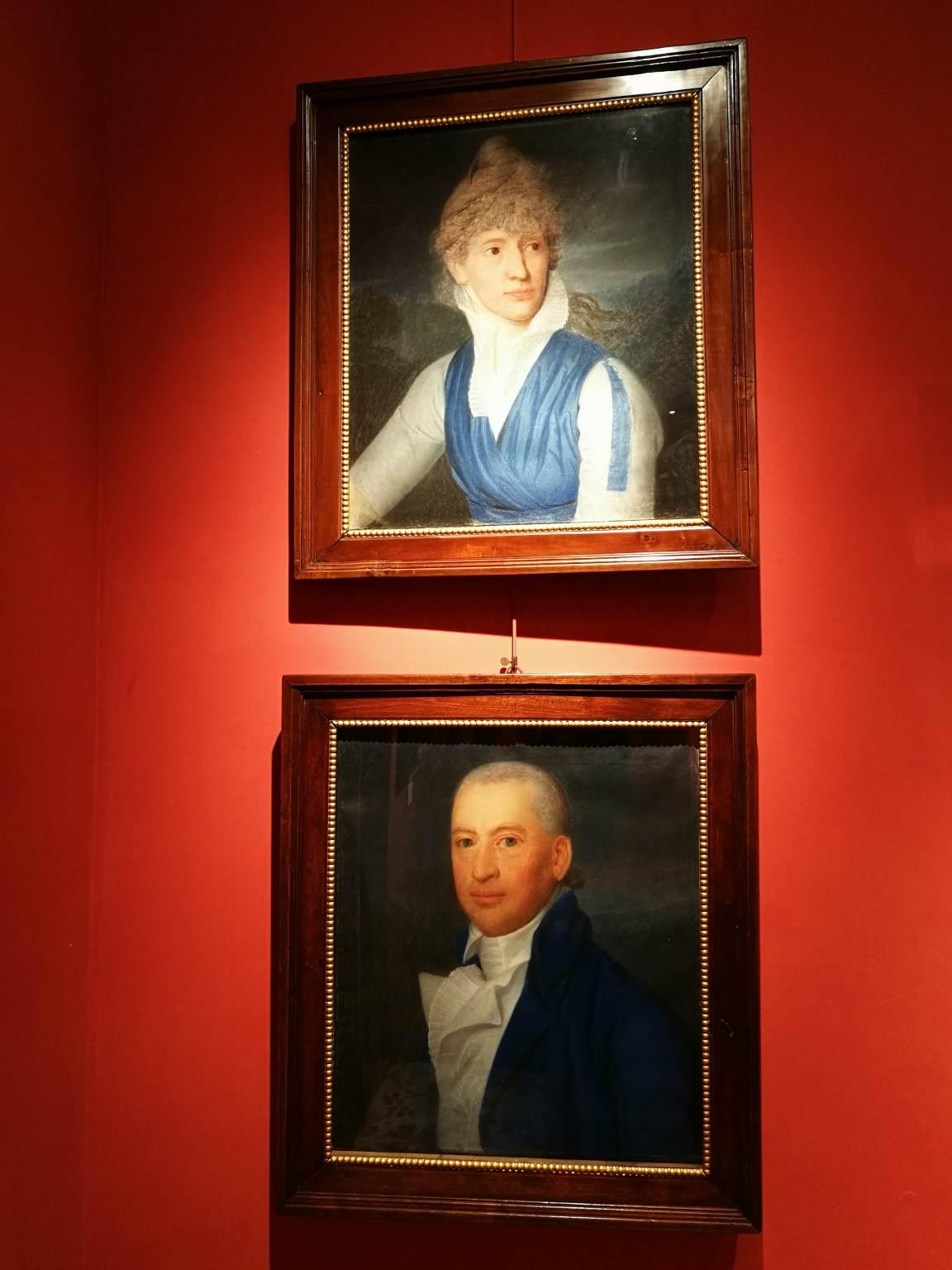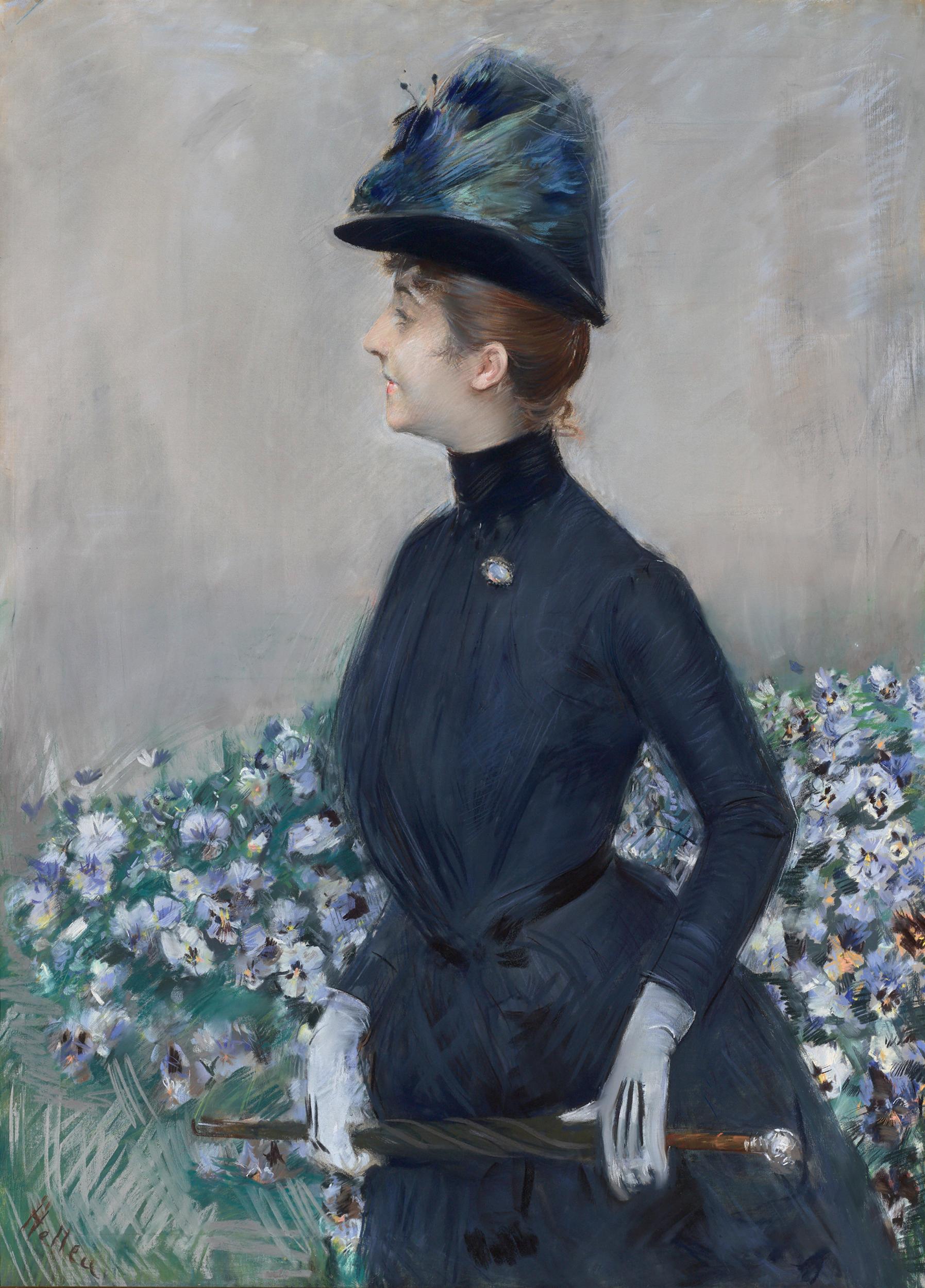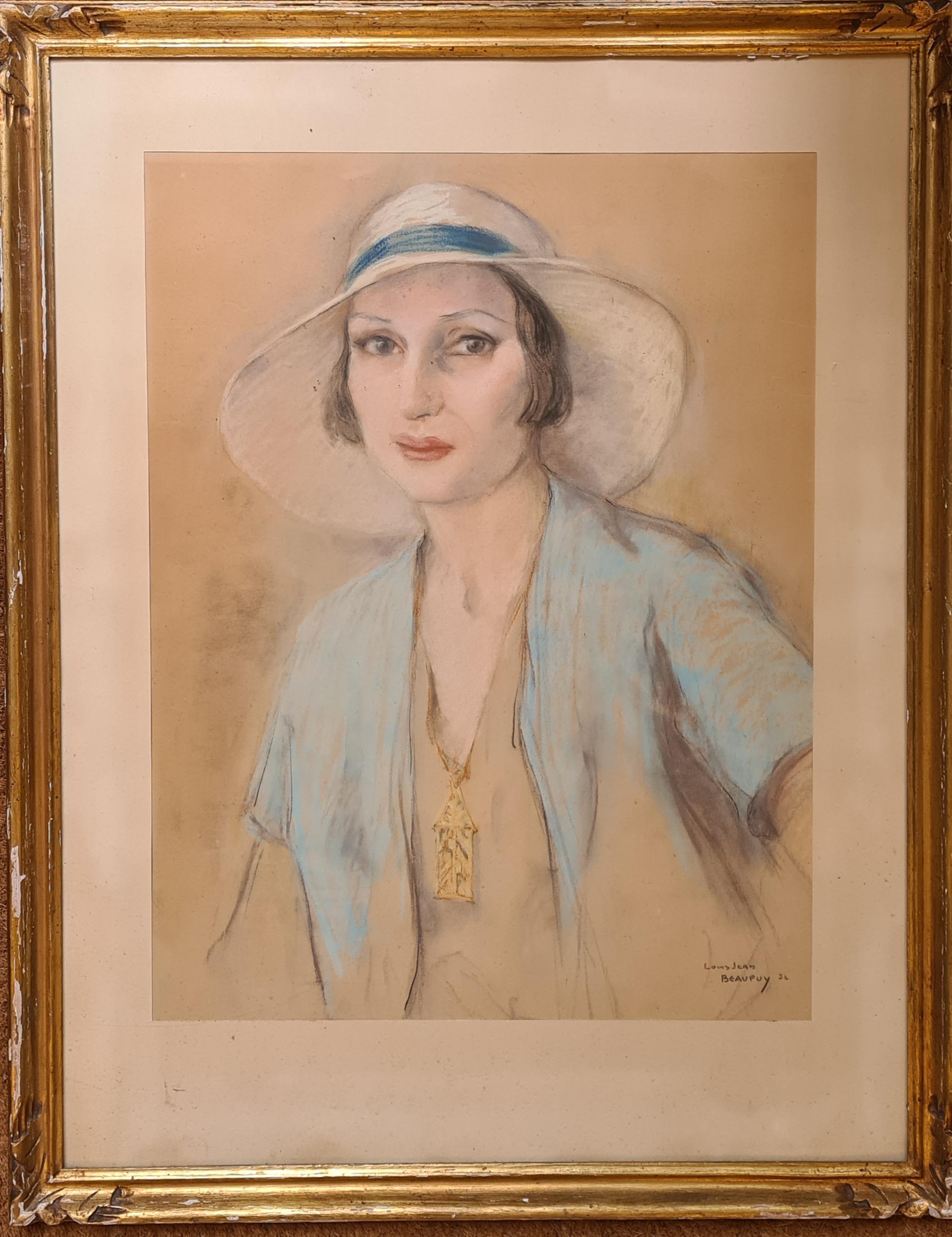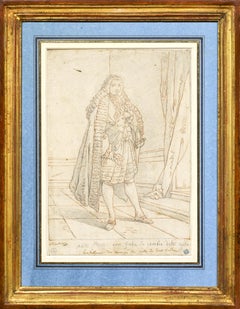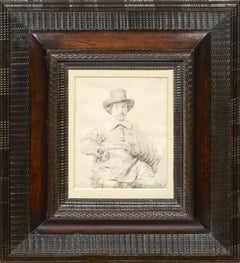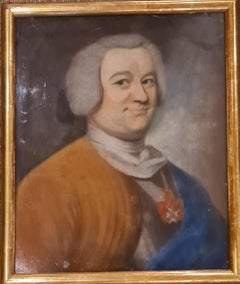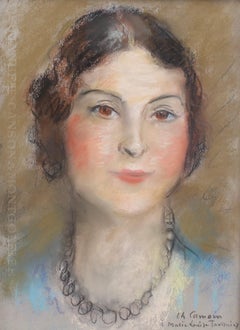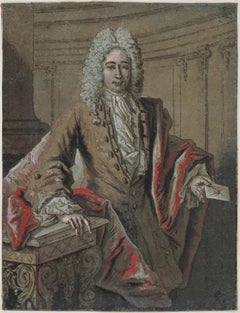
Portrait of a Man Holding a Letter, a drawing by Jean-Baptiste Oudry 1686 - 1755
View Similar Items
Want more images or videos?
Request additional images or videos from the seller
1 of 8
Jean-Baptiste OudryPortrait of a Man Holding a Letter, a drawing by Jean-Baptiste Oudry 1686 - 1755Circa 1710
Circa 1710
About the Item
- Creator:Jean-Baptiste Oudry (1686 - 1755, French)
- Creation Year:Circa 1710
- Dimensions:Height: 8.15 in (20.71 cm)Width: 6.3 in (16.01 cm)
- Medium:
- Movement & Style:
- Period:1710-1719
- Condition:Ink, wash and pastel drawing on blue paper (turned brown) Louis XIV style giltwood frame (11.14" x 8.78") Provenance: Parisian private collection (bought at the Ader-Picard-Tajan sale of 27/11/1990) Size with frame 11.14" x 8.78" (28.3 x 22.3 cm).
- Gallery Location:PARIS, FR
- Reference Number:1stDibs: LU156828206182
About the Seller
5.0
Vetted Seller
These experienced sellers undergo a comprehensive evaluation by our team of in-house experts.
Established in 2020
1stDibs seller since 2021
8 sales on 1stDibs
Typical response time: 2 hours
More From This SellerView All
- Portrait of a Lady, Drawing Signed and Dated by Augustin de Saint-AubinBy Augustin de Saint-AubinLocated in PARIS, FRThis drawing full of freshness presents us with the profile of an elegant lady, drawn by Augustin de Saint-Aubin on a beautiful summer day in 1776, during the early months of Louis X...Category
1770s Old Masters Portrait Drawings and Watercolors
MaterialsPastel, Pencil
- Costume of an envoy of Venice, a drawing by Francesco Galimberti (1755 - 1803)Located in PARIS, FRWe thank Mrs. Bożena Anna Kowalczyk who suggested the attribution to Francesco Galimberti based on a photograph of the artwork. This engaging drawing, finely executed in black and red chalks, depicts a Venetian diplomat in his 'new clothes...Category
1780s Old Masters Portrait Drawings and Watercolors
MaterialsChalk
- Portrait of a Newlywed by Casper Casteleyn, an artist of the Dutch Golden AgeLocated in PARIS, FRThis marvelous portrait on vellum is the work of a rare Dutch Golden Age artist, Casper Casteleyn, who has also drawn a closely related portrait now at the Fondation Custodia in Pari...Category
17th Century Old Masters Portrait Drawings and Watercolors
MaterialsChalk, Vellum
- The Arab Butcher, a preparatory drawing by Gustave Guillaumet (1840 - 1887)Located in PARIS, FRThis intensely expressive figure is a preparatory study for "Arab Market on the Tocria Plain", a painting exhibited at the 1865 Salon and now in the Musée des Beaux-Arts in Lille. 1...Category
1860s Old Masters Figurative Drawings and Watercolors
MaterialsChalk, Carbon Pencil
- Portrait of Jean-Baptiste Greuze, painted on linen by his daughter Anna GreuzeLocated in PARIS, FRThis replica of the last self-portrait of Jean-Baptiste Greuze painted in 1804, executed by his daughter Anna at her father's side and recently rediscovered, provides us with a poignant image of the great artist, represented with panache despite the disillusions of life. 1. Jean-Baptiste Greuze Jean-Baptiste Greuze was the sixth child of a roofer from Tournus and retained a certain rusticity in his behaviour from his provincial childhood, beyond his taste for describing picturesque scenes of the countryside. He initially started training with a little-known painter from Lyon, Charles Grandon, before his genius was recognised in Paris where he became a full-time student of the Académie (of Painting) in 1755. He exhibited his work for the first time at the Salon during the summer of 1755, before leaving on a trip to Italy in the company of Louis Gougenot, abbot of Chezal-Benoît. Upon his return to Paris, Greuze became a prolific painter, participating widely in the Salons held between 1759 and 1765, to which he sent no less than 63 paintings: numerous genre scenes (The Marriage Contract, The Beloved Mother), but also portraits of his family circle, of courtiers and art lovers, or of his colleagues. The Academy closed the doors of the Salons to him in 1767 for not having produced his reception piece within six months of his reception, as was the tradition. He worked actively on this painting (Emperor Severus rebukes Caracalla, his son, for trying to assassinate him ) until the summer of 1769, tackling historical and mythological subjects for the first time. Once this was completed, he was then fully admitted to the Academy, but as a genre painter, and not as an historical painter, which had been one of the greatest humiliations of his life. Greuze then refused any participation in events organised by the Academy or its successor, the Academy of Fine Arts until 1800. Abandoning history painting, he gave a new twist to genre scenes, bringing them closer to history painting, as in this pair of canvases which constitutes some of his masterpieces: The Paternal Curse: The Ungrateful Son and The Paternal Curse: The Punished Son . Married in 1759 to Anne-Gabrielle Babuti, the daughter of a Parisian bookseller, his marriage was unhappy and his wife probably frequently unfaithful. The institution of divorce enabled him to record their separation in 1793, keeping his two daughters Anna-Geneviève, born in April 1762, and Louise-Gabrielle, born in May 1764, with him. Little is known about his daughter Anna except that she was herself a painter and lived with her father until his death. It is likely that most of the paintings she produced up to that date were attributed to her father, whose technique she shared to a great extent, making it extremely difficult to establish an autonomous corpus of her paintings. Greuze died in his studio at the Louvre on March 21st 1805. The attention paid to the expressivity of his characters and the emotional charge they convey enabled Jean-Baptiste Greuze to enjoy immense popularity with the eighteenth-century public, and they still constitute Greuze's true modernity. As the artist said, "I dipped my brush in my heart". Greuze was also an exceptional draughtsman and a portraitist of immense talent and exceptional longevity who painted both the Dauphin (the son of Louis XV and father to Louis XVI) and the young Napoleon Bonaparte. 2. Greuze's self-portraits Greuze was very much influenced by Dutch paintings during all his life. While the source of his inspiration for genre scenes can be found in Gerard Dou...Category
Early 1800s Old Masters Portrait Paintings
MaterialsLinen, Oil
- Portrait of Senator Bartolomeo Panciatichi by Santi di Tito (1574)Located in PARIS, FRThis recently rediscovered portrait of Santi di Tito depicts a Florentine senator, with a letter in his hand indicating that the painting was executed in 1574 when the sitter was 66 years old. On the basis of these clues, it is tempting to view it as a portrait of Bartolomeo Panciatichi, who was painted some thirty years before by Bronzino (1503 - 1572). While the treatment of the hands recalls the Florentine tradition of Mannerist portraits, the comparison with Bronzino's portrait illustrates Santi di Tito's search for greater realism, despite the stereotyped composition. 1. Santi di Tito, Counter-Reformation painter and portraitist Santi di Tito was the great painter of the Florentine Counter-Reformation. He proposed a new artistic language that broke away from Mannerism. Little is known about his training in Florence (perhaps alongside Bronzino or Baccio Bandinelli), but this period of training enabled him to join the Company of Saint Luke, the guild of Florentine painters, in 1554. Between 1560 and 1564, Santi di Tito spent time in Rome, where he frequented the workshop of Taddeo Zuccari. This stay had a fundamental influence on his work, thanks to the discovery of the late work of Raphael, but also his encounters with the painters Francesco Salviati and Federico Barocci. Around 1565, Santi di Tito returned to Florence, where he remained until the end of his life, dividing his talents between the creation of important religious paintings and countless portraits. He became one of the city's leading painters, distinguishing himself, in particular, in the creation of large religious compositions in which the spirit of the Counter-Reformation was reflected. In 1568, Santi di Tito became a member of the Confraternity of Saint Thomas Aquinas...Category
16th Century Old Masters Portrait Paintings
MaterialsPoplar, Oil
You May Also Like
- CHILD - Alfonso Grassi Pastel on paper Portrait italian PaintingBy Alfonso GrassiLocated in Napoli, ITCHILD - Pastel on paper cm.51x41 signed lower right by Alfonso Grassi, Italy. Wooden frame with passeportout cm.94x73Category
Late 20th Century Old Masters Portrait Paintings
MaterialsPastel, Paper
- French Pastel Portrait of a Chevalier of the Order of St Louis.By (Circle of) Jean Baptiste GreuzeLocated in Cotignac, FRA fine 18th century French pastel portrait on paper of an aristocrat wearing the order of St Louis, inferring that the sitter had been in the military serving the King. The pastel is unsigned but to the the back is a piece of the original backing paper with a notation to the Baronne de Minck. The paper has been backed with a type of vellum, It is presented in a plain gilt wood frame on a period stretcher under 18th century glass. The artist has used the pastel to create a wonderful soft velvety texture so characteristic of this medium which became so popular for portraits in the 18th century. A charming rendition of a typical 18th century nobleman...Category
18th Century Romantic Portrait Drawings and Watercolors
MaterialsPaper, Pastel
- Portrait of Woman in Pearl NecklaceBy Charles CamoinLocated in London, GB'Portrait of Woman in Pearl Necklace', pastel on fine art paper (see information below), by Charles Camoin (circa 1920s) dedicated to Marie-Louise Tavernier. Regrettably, research on...Category
Early 20th Century Expressionist Portrait Drawings and Watercolors
MaterialsPaper, Pastel
$4,425 Sale Price50% Off - Saudi Arabia King Faisal Time Magazine Cover - Man of The Year StudyBy Bob PeakLocated in Miami, FLMaster portrait artist and illustration legend Bob Peak captures the likeness, dignity and essence of Saudi Arabia's King Faisal for Time Magazine Cover ...Category
1970s Realist Portrait Drawings and Watercolors
MaterialsArchival Paper, Pastel
- "Demoiselle" - Framed Early 20th Century Pastel Woman PortraitLocated in New Orleans, LAI apologize for the reflections on the glass of this exquisite Gaston Bouy pastel drawing. It's in a very nice frame in great condition, and I did not want...Category
Early 1900s Portrait Drawings and Watercolors
MaterialsPastel
$1,600 Sale Price46% Off - "Jade", Figurative, Portrait, Acrylic, Chalk Pastel, Wax PastelBy Chambers AustelleLocated in Philadelphia, PAThis figurative portrait drawing titled "Jade" is an original artwork by Chambers Austelle made of acrylic, chalk pastel, wax pastel. This piece measures 12"h x 12"w. Chambers Austelle is a contemporary figurative painter and educator living and working in Charleston, SC. Austelle is best known for her compositions of vivid color and female subjects. The isolated environments challenge the viewer to question the way beauty and women are perceived in our culture. Austelle’s work has been exhibited nationally and exists in many private collections. She was awarded Best in Show at The City Gallery for “Piccolo Spoleto’s 2016 Juried Exhibition”, as well as Charlie Magazine’s “50 Most Progressive”. Most recently, she was the 2018 recipient of St. Thomas’ Artist...Category
21st Century and Contemporary Contemporary Portrait Drawings and Waterco...
MaterialsOil Pastel, Chalk, Pastel, Acrylic
Recently Viewed
View AllMore Ways To Browse
Letter A
Masters Drawings Signed
Portrait Of A Black Man
Antique Letter A
Creation Of Man
Antique Drawing Book
Drawing Academy Classical
Large Figure Drawings
Portrait Old Man
Portrait Of Old Man
Old Master Drawings Framed
Portrait Of An Old Man
Drawing Cartoon
Rich Man
Jean Louis De Paris
Signed Letter American
Open Letter
A L Holding
